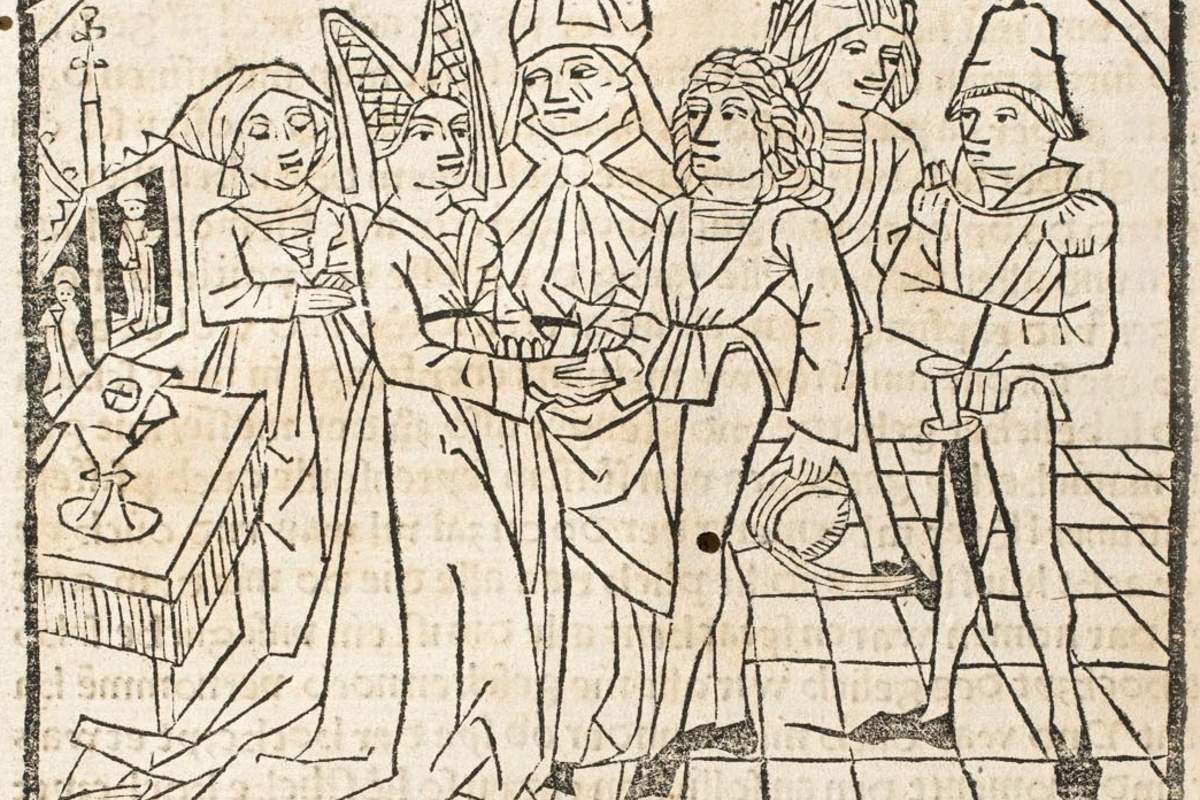
From Melusina: Melusine and the knight Raymond are getting betrothed by a bishop. Sammelband with six popular illustrated German literary works. All printed in Strasbourg, 1477-1489.
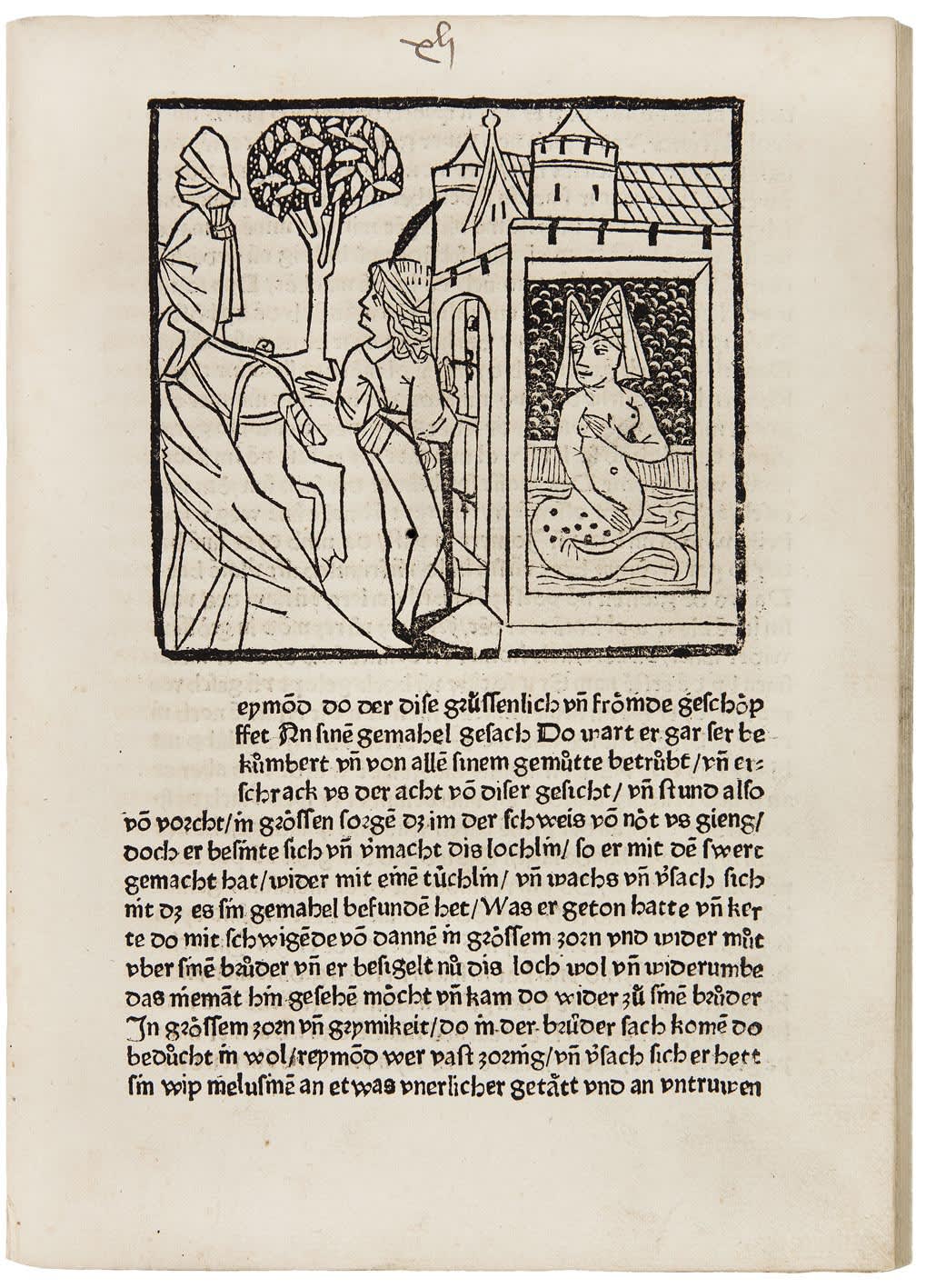
From Melusina: The knight Raymond about to spy on his ‘cursed’ wife Melusine in the bath. Sammelband with six popular illustrated German literary works. All printed in Strasbourg, 1477-1489.
Through its curated text selection, the Sammelband at hand provides a splendid window into the mentality of the 15th century, uniting stories of ancient history with pilgrim accounts and fantastic tales of Good and Evil. The texts included within the Sammelband are:
- Melusina by Thüring of Ringoltingen
- Griseldis by Petrarch (who translated it from the Italian into Latin). Here in the German translation by Heinrich Steinhöwel
- Belial by Jacobus de Theramo
- Historia Alexandri Magni in the translation by Johann Hartlieb
- Historia destructionis Troiae in the translation of Hans Mair
- Jean de Mandeville’s Itinerarius in the translation of Otto von Diemeringen
With its numerous woodcuts, the Sammelband is not only a wonderful book in and of itself but offers fascinating avenues for scholarship due to the rarity of its texts and the fact, that many of the works represent the first edition printed in Strasbourg itself. This is the case with Griseldis, Alexander Magnus, and Historia destructionis Troiae. A collection like this certainly opens questions into the particularities of its production and use, some of them can be answered looking at the materiality of the printed book.
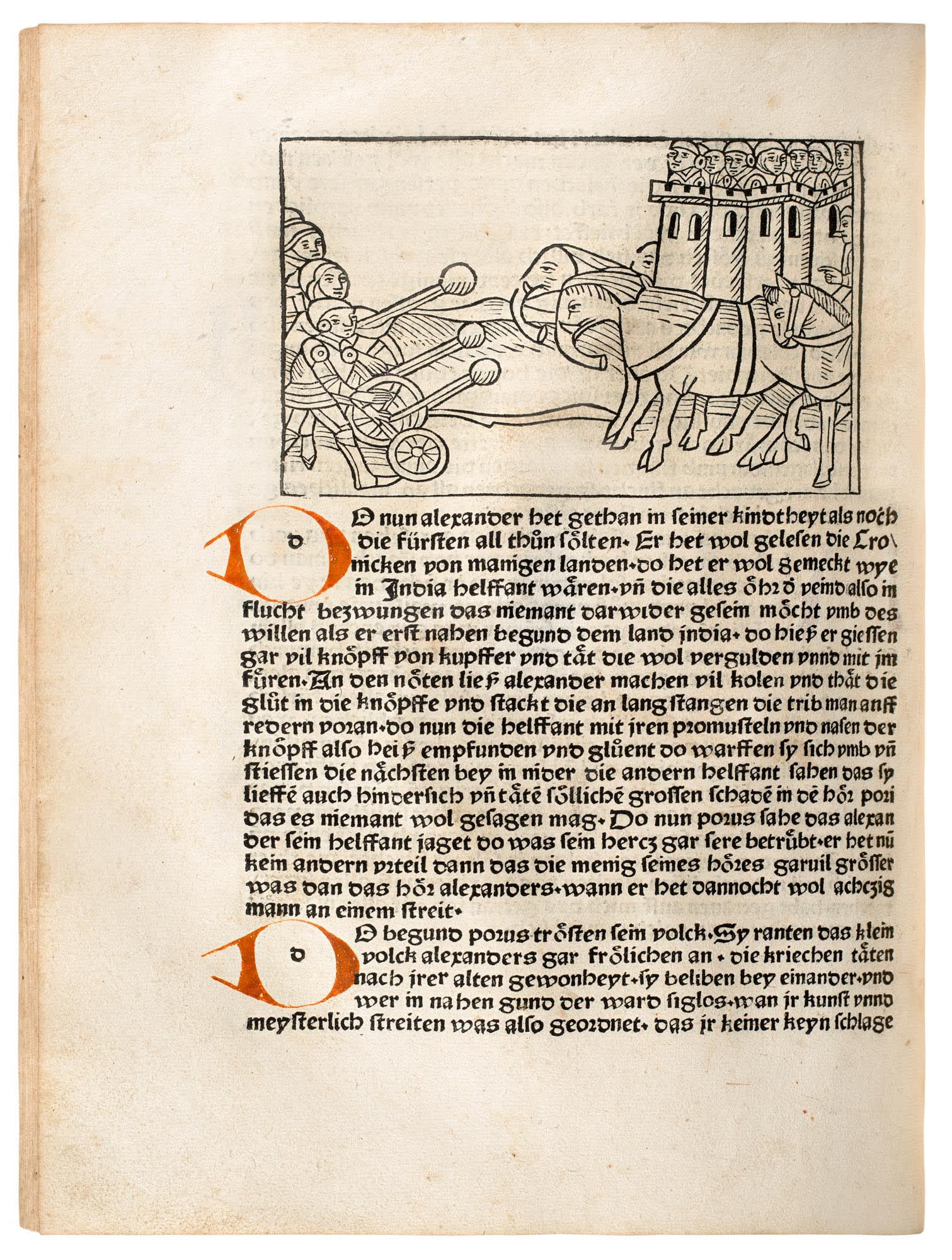
From Historia Alexandri Magni: Alexander the Great’s army fighting the elephants of the Indian king Porus. Sammelband with six popular illustrated German literary works. All printed in Strasbourg, 1477-1489.
A contemporary inscription on the first page, describing the book as a collection of three texts and corresponding foliation until the Historia Alexandri Magni, suggests that the first three books (printed in 1477-1478) were bound together initially. Sometime later, most likely in the early 16th century, more texts were added. During this process the pages were slightly trimmed to suit the current 16th century binding. As the foliation (page numbering by hand) does not include the second half of the text collection, this might hint at a change in hands by this time.

Sturdy 16th century binding with clasps and 5 of the original pieces extant. Sammelband with six popular illustrated German literary works. All printed in Strasbourg, 1477-1489.
Interestingly, all texts within the Sammelband were conceived in Latin, French, and Italian making a translation necessary. Texts such as the fairy-tale like story of the cursed Melusine (ancestor of the house of Lusignan) or the story of Griseldis circulated in different versions in central Europe. Through means of translation, these texts entered the German speaking realm and steadfastly gained in popularity, again demonstrated in the high number of editions and print runs. The text selection at hand organically merged entertainment and edification for the contemporary reader, with some texts like the Historia Alexandri Magni or the Historia destructionis Troiae serving a moral-didactical purpose. These educational and entertaining tales were brought together to create a mobile library whose survival was insured by a sturdy binding.

From Historia destructionis Troiae: Achilles bringing a lion to his mother Thetis (top). The nymph Thetis bringing her son’s body to Scyros (bottom). Sammelband with six popular illustrated German literary works. All printed in Strasbourg, 1477-1489.
The development of the printing press by Gutenberg not only increased the speed and impact of the German Reformation, it also created a heightened desire for reading materials. These developments particularly benefitted the lay populace. To cater to the increasing demand, publishers and printers turned to works which already enjoyed a certain popularity in manuscript form, such as the works collected in this Sammelband.
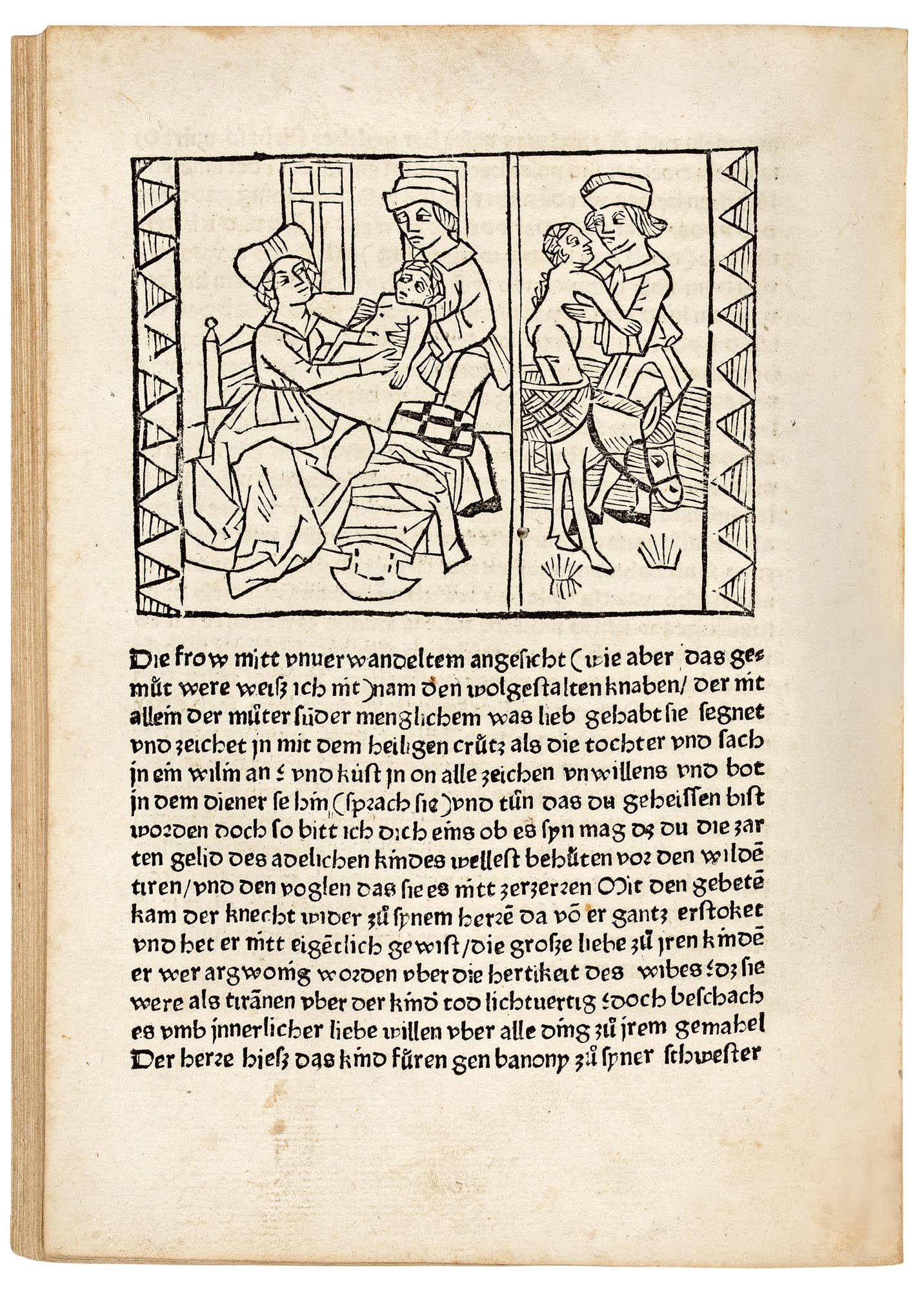
From Griseldis: The heroine Griseldis handing over her two children in her first trial. The fantastic scene also offers insight into contemporary life, portraying interior scenes. Sammelband with six popular illustrated German literary works. All printed in Strasbourg, 1477-1489.
The Strasbourg publishers of the texts at hand – Heinrich Knoblochtzer, Martin Schott, and Johann Prüss – printing both scholarly Latin and vernacular literary works, were influential in establishing and maintaining a vernacular book market north of the Alps. Knoblochtzer is the first Strasbourg printer to publish illustrated printed books with a wide appeal. The publishers Schott and Prüss soon followed suit and would even go so far as to ‘borrow’ many of Knoblochtzer’s woodcuts for works produced on their own presses.

From Jean de Mandeville’s Itinerarius: Fantastic beasts and plants in Jean de Mandeville’s accounts. Sammelband with six popular illustrated German literary works. All printed in Strasbourg, 1477-1489.
Many of the surviving bestsellers in print, already had a pre-existing career as popular reading material in manuscript form, like Jean de Mandeville’s travel account with a staggering 110 extant German manuscripts (45 in the translation of Otto von Diemeringen https://handschriftencensus.de/werke/851). Mandeville’s account is a premier example of a popular manuscript being successfully translated into print, with the GW (Gesamtkatalog der Wiegendrucke, engl. complete catalogue of incunabula) recording printed editions in Latin, German, French, Italian, English, and Dutch.
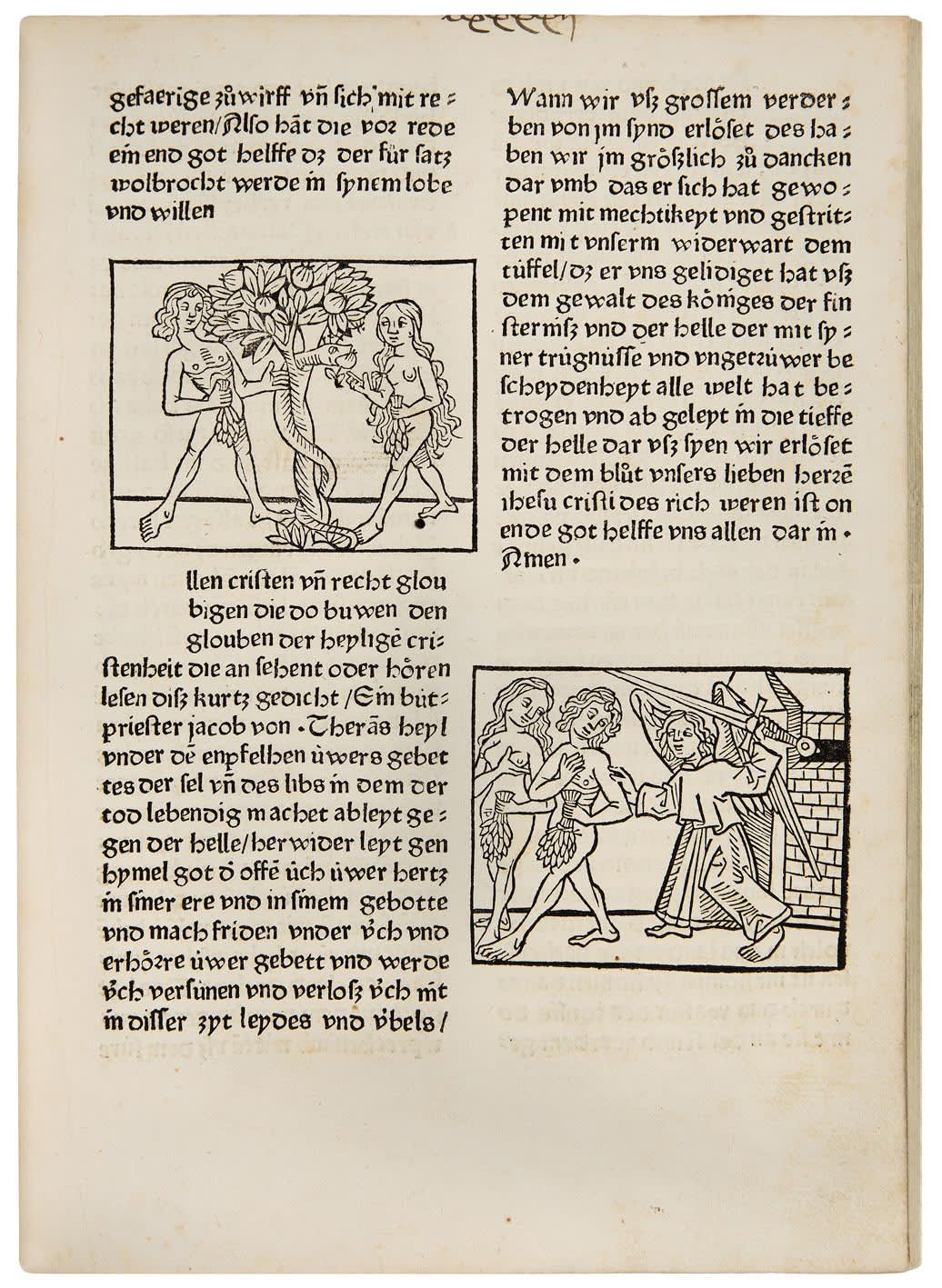
From Belial: The Expulsion from the Paradise in the preamble to Jacobus de Theramo’s Belial. Sammelband with six popular illustrated German literary works. All printed in Strasbourg, 1477-1489.
This fascinating Sammelband in a contemporary binding, provides a glance into the changing literary world of 15th century Strasbourg. A beautiful and richly decorated witness to the development of German vernacular literary culture, the international humanist movement, and printing culture in its infancy.
This spectacular Sammelband is currently on offer at Dr. Jörn Gunther Rare Books. You can find a short description and further information here. For more information contact Dr. Natascha Domeisen at: nd@guenther-rarebooks.com


